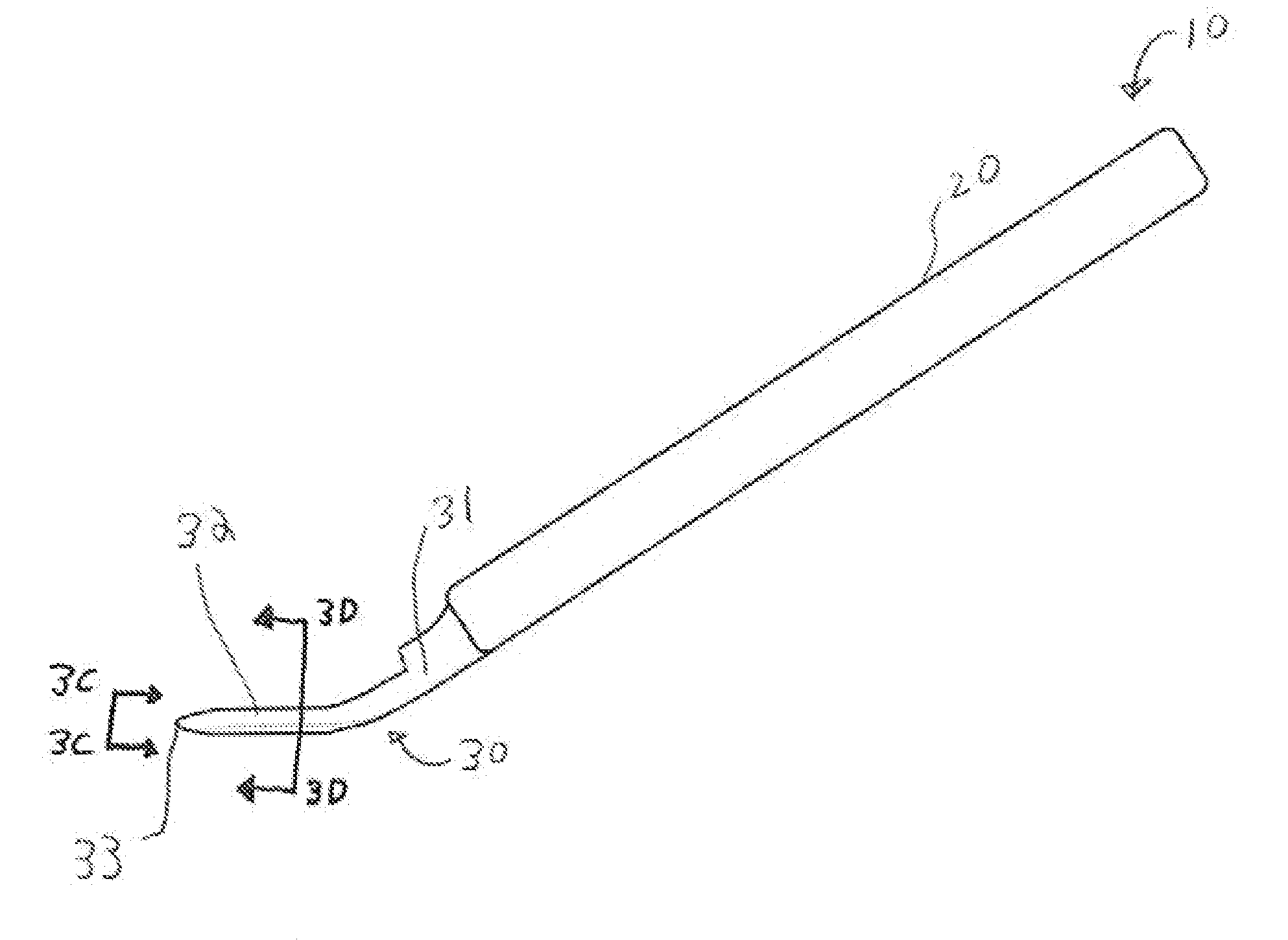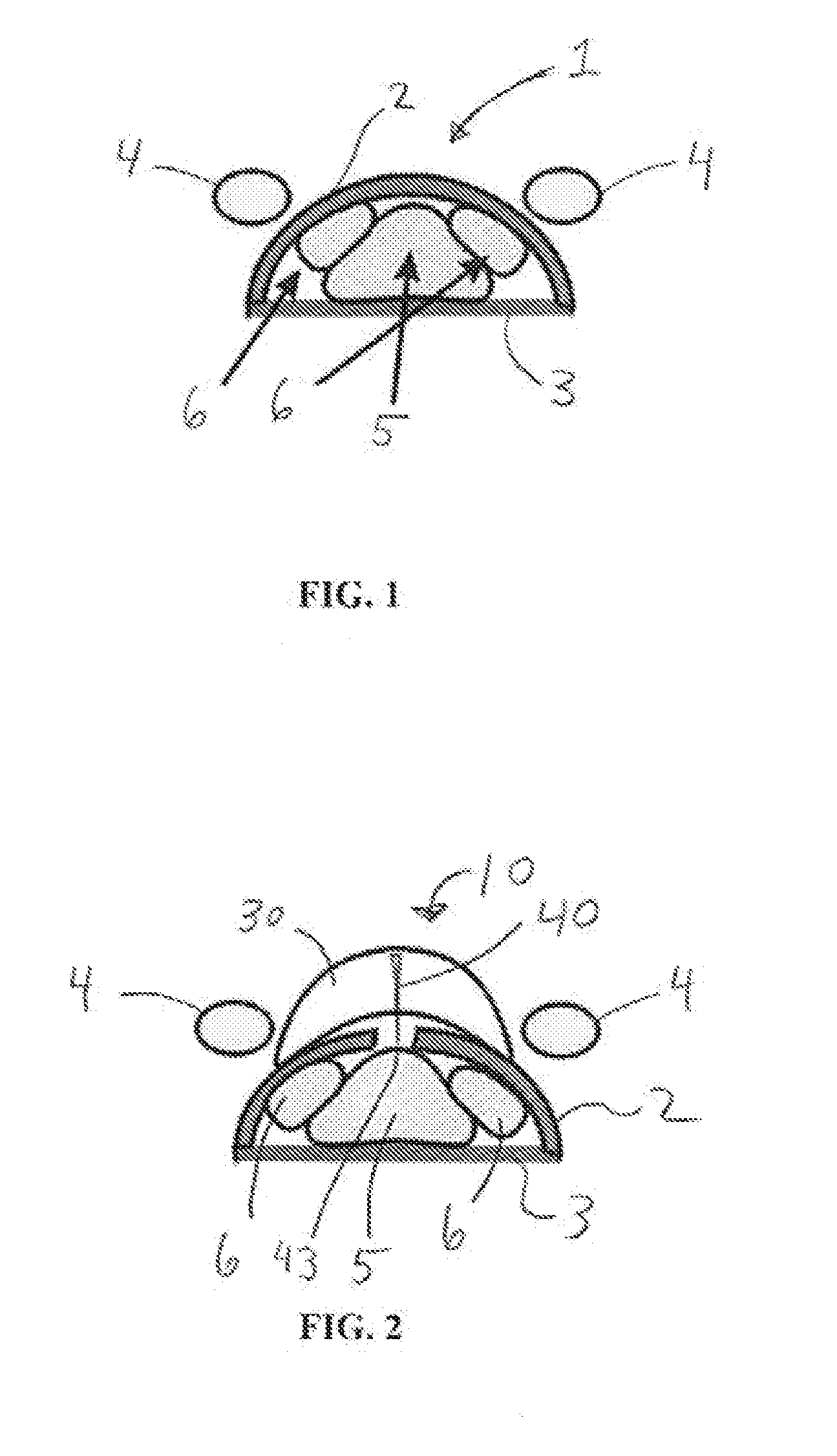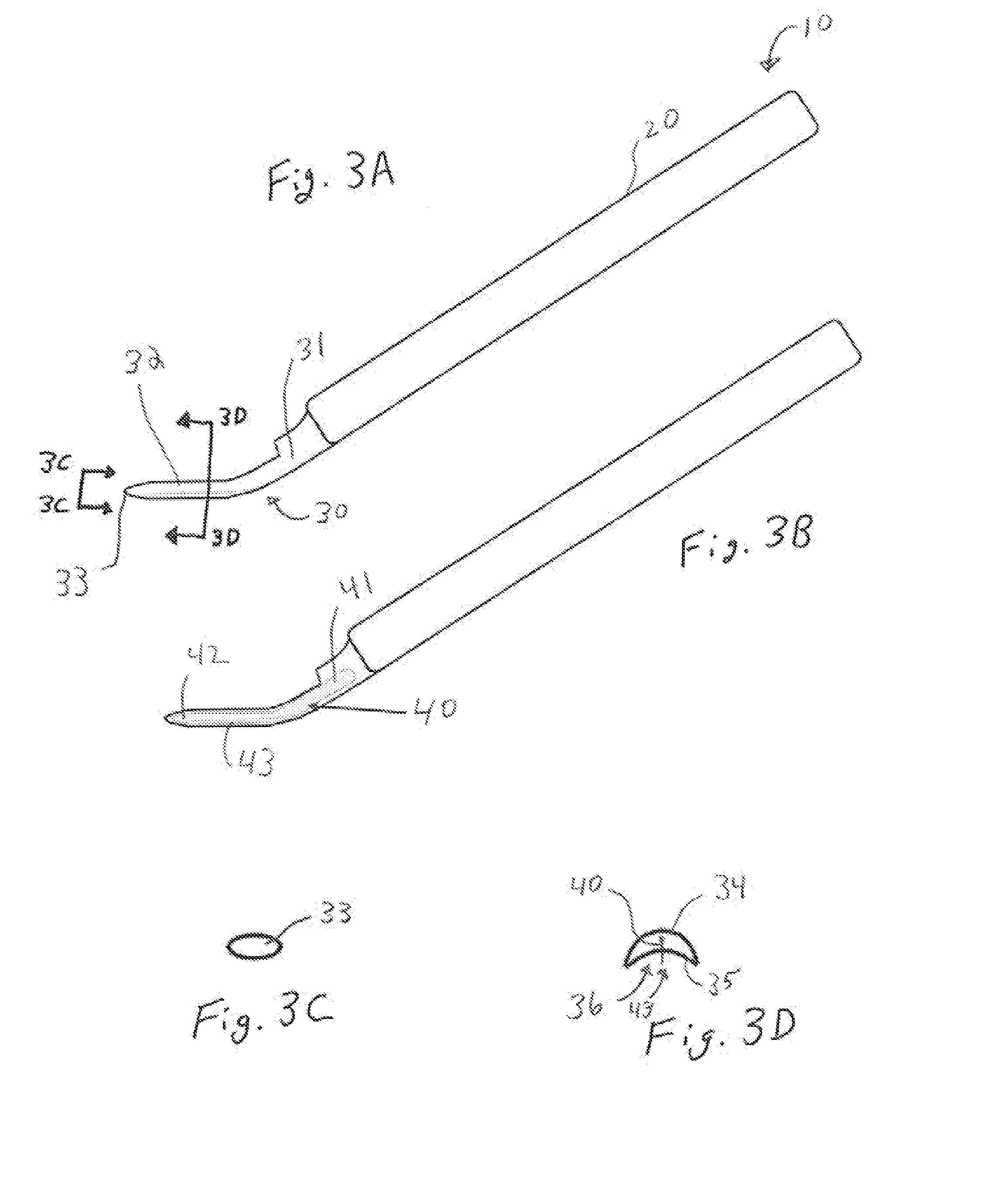Surgical tool with integral blade and self-centering tip
a surgical tool and self-centering technology, applied in the field of surgical instruments, can solve the problems of inability to accurately place the arthroscope, the risk of clipping a digital nerve, and the limited applicability of arthroscopy for the division of the a1 flexor sheath for trigger fingers, etc., and achieve the effect of simplifying the cross-sectional view
- Summary
- Abstract
- Description
- Claims
- Application Information
AI Technical Summary
Benefits of technology
Problems solved by technology
Method used
Image
Examples
Embodiment Construction
[0062]While several different preferred embodiments are shown in the various FIGS., common reference numerals in the figures denote similar or analogous elements or structure amongst the various embodiments. Moreover, in the figures, the lighter shaded regions indicate structure and / or elements which are hidden from view behind other structure or elements.
[0063]Referring to FIG. 1, a partial, transverse cross-section of the human hand, proximate the junction of metacarpal and proximal phalanx bones, is shown in simplified form. In particular, the A1 pulley tendon sheath 1 is shown, having a relatively planar floor 3 adjacent metacarpal and proximal phalanx bones (not shown), and an convex, arcuate outer surface 2 extending outwards towards the palm of the hand. The flexor digitorum profundus (FDP) tendon 5 and flexor digitalis superficialis (FDS) tendons 6 are encased within tendon sheath 1 from a region that partially overlies a metacarpal bone extending longitudinally to a region ...
PUM
 Login to View More
Login to View More Abstract
Description
Claims
Application Information
 Login to View More
Login to View More - R&D
- Intellectual Property
- Life Sciences
- Materials
- Tech Scout
- Unparalleled Data Quality
- Higher Quality Content
- 60% Fewer Hallucinations
Browse by: Latest US Patents, China's latest patents, Technical Efficacy Thesaurus, Application Domain, Technology Topic, Popular Technical Reports.
© 2025 PatSnap. All rights reserved.Legal|Privacy policy|Modern Slavery Act Transparency Statement|Sitemap|About US| Contact US: help@patsnap.com



